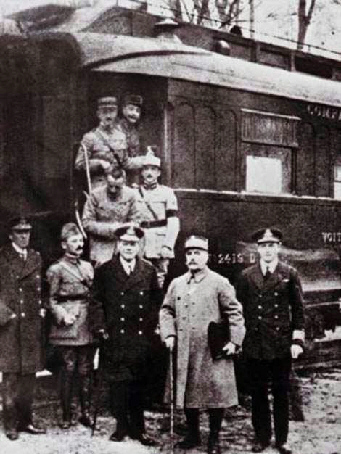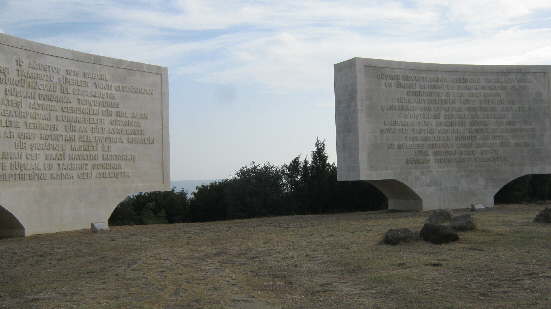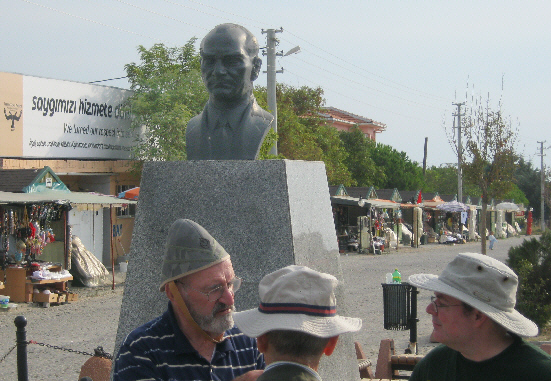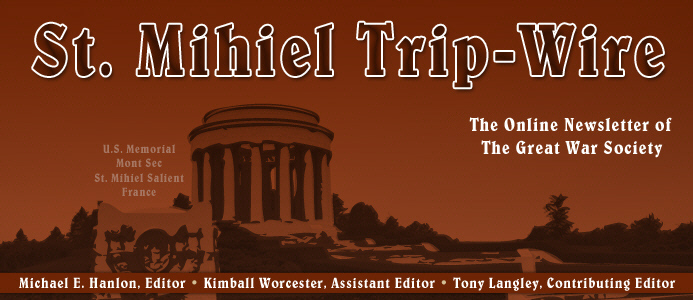

November 2010 |
Access Archives |
|
TRENCH REPORT: Wow, eight years, over 90 issues of World War I news, images, opinion, history, personality profiles, access to the best of the Web and the activities of The Great War Society, WFA-USA, and our sister organizations. I'm both proud and appreciative of my colleagues, Kimball and Tony, our regular contributors like Christina Holstein, Len Shurtleff, Sidney Clark, Andy Melomet, and many others who have joined us for an issue or two. Most of all, a big thank-you to all our readers who have supported us over the years and sent thousands of items and suggestions we have included on our pages. . .Next National Seminar Announced: The 2011 national seminar has been scheduled for 9-10 September at the Citi-Garden Hotel next to the San Francisco International Airport. More details will be forthcoming in the next Trip-Wire. MH Mini-Documentaries of Signature Battles
The Canadian Expeditionary Force Study Group recently sent the editors a 148-page summary of recommended Websites. It includes at least six sites associated with us, but I thought, instead, that our readers might enjoy brushing up on some of the war's signature battles. Here are a few of their many video recommendations: |
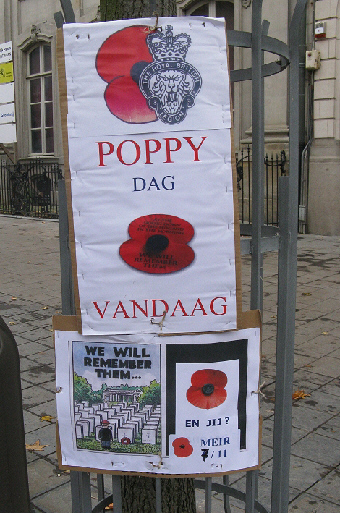 Last November 11th in Antwerp
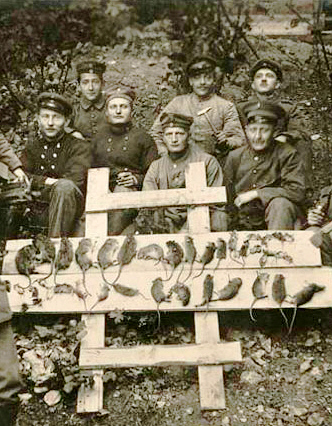 Rat Hunters |
|||||||||||||
At the National Constitution Center, Independence Mall, Philadelphia, "Art of the American Soldier," opened recently and continues through 11 Jan. (Read more)
News from Down Under:
The Australian film Hill 60 has begun winning film prizes. (link)
Docudrama on historian Charles Bean is being released on Armistice Day by the History Channel. Not sure of release schedule in the States, however. (link)
"Chaos and Classicism" at New York's Guggenheim through 9 January explores the impact of the war on art. (article)

We were under a heavy barrage all day, One shell burst on the parapet and knocked six of us down. We were shaky for some time, otherwise no harm done.
Pvt. William Vincent, Australian 21st Battalion,
Passchendaele, October 1917
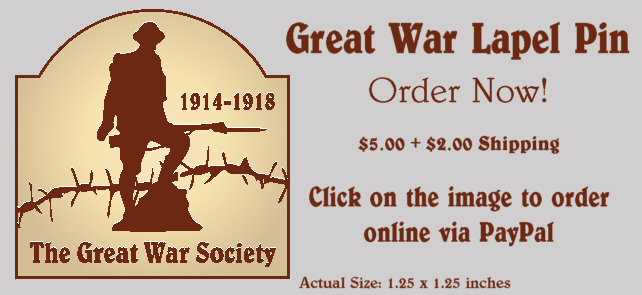
|
This past September I led my second tour of the Gallipoli battlefields. One thing that interested this year's group is the extreme concentration of statues, memorials, and informational kiosks dedicated to commemorating the service of Mustafa Kemal Atatürk during the battle. Here are some examples of what we saw. 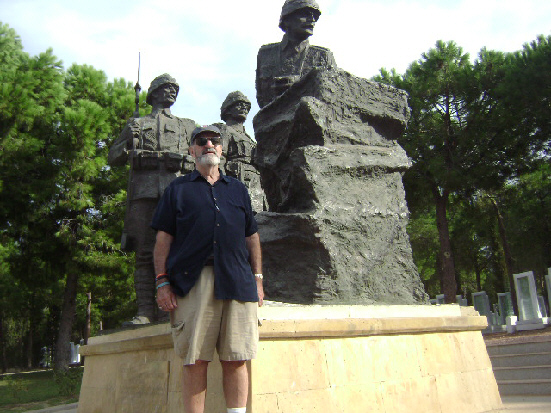
Jack Kavanagh Discovers One of Dozens of Mustafa Kemal Statues Located around the Battlefield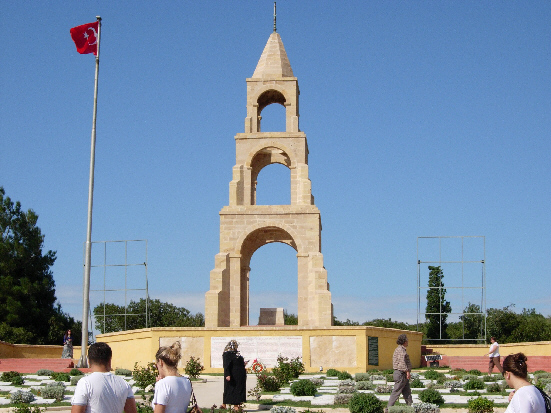
57th Turkish Regiment Memorial and Cemetery |


Probably Issued No Later Than 1915 |
War in a Different Light
FIRST WORLD WAR FOUGHT WITH
|
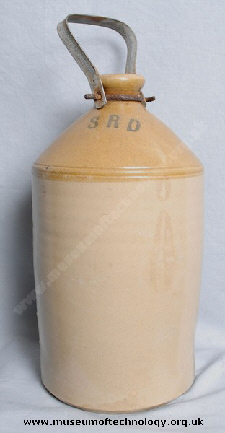 S.R.D. Rum Jar |
"Rum was essential for providing some men with liquid courage, while for others, it helped to control nerves or simply to dull them," writes historian Tim Cook in Canadian Military History, an academic journal published by the Centre for Military, Strategic and Disarmament Studies at Wilfrid Laurier University in Waterloo, Ont. Wrote one Canadian soldier in a letter home: "Under the spell of this all-powerful stuff, one almost felt that he could eat a German dead or alive, steel helmet and all."
Mr. Cook has produced the first scholarly study of rum's importance in the daily lives of Canadian troops. His article "Demon Rum and the Canadian Trench Soldier of the First World War" says rum preserved in soldiers the will to fight and helped produce the victories at Passchendaele and Vimy Ridge that brought pride to Canada.
People tend to focus on the buddy system, that soldiers fought for their pals in the trenches," said Mr. Cook in an interview. "Well, the thing I found while reading through their diaries and letters is this little three-letter word kept popping up -- rum." Mr. Cook, a First World War author, says the drink was essential for the Canadian army in several ways: It boosted the morale of troops in the appalling trenches; it helped men sleep at night under the constant barrage of explosives; and because rum was issued by senior ranks and sometimes withheld as punishment, it helped enforce the hierarchical structure of the army.
But rum's primary purpose was as a combat motivator. When drams were ladled out to soldiers minutes before an attack, it suppressed the fear of rational men, terrified of climbing out of their trenches into the teeth of enemy fire. "If we had not had the rum we would have died," wrote Private G. Boyd, who fought for Canada at Passchendaele.
The great irony is that back home, the temperance movement was in full swing By 1917, all provinces except Quebec had been convinced to enact Prohibition. Prohibitioners then wanted to revoke all alcohol privileges for the army overseas. While some soldiers did refuse their rum rations, most greeted the movement with anger. "Oh you psalm-singers, who raise your hands in horror at the thought of the perdition the boys are bound for, if they should happen to take a nip of rum to keep a little warmth in their poor battered bodies," wrote Harold Baldwin, a Canadian infantryman.


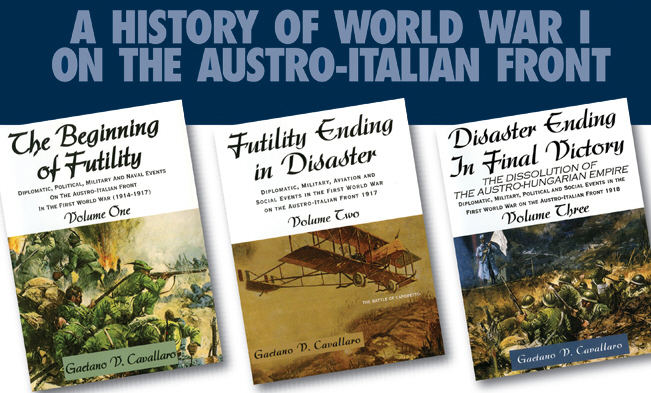 TGWS and WFA-USA Member Gaetano (Guy) Cavallaro, RPh, MD, has recently completed a 50- year project. For a half-century, he has been researching the Great War on the Italian Front and has now published his findings in a monumental three-volume set, A History of World War I on the Austro- Italian Front. In over 2,000 pages Dr. Cavallaro covers every aspect of the war in Italy: military operations, including air and naval, diplomacy, political and social factors, and an extensive review of the dissolution of the Austro-Hungarian Empire. Each or all of the volumes can be ordered at the publisher's Website: http://www.worldwaronehistory.com/ at $33.00/each postage included. A boxed set is available for $130. Here is a moving anecdote from the introduction to Volume 1.  |

A 240mm French Shell Lands on the German Front Line
|
in the 21st Century |
 |
Torchbearers of Democracy: African-American Soldiers in the World War I EraReviewed by Len Shurtleff |
Dr. Chad Williams has put together a far-ranging and detailed analysis of the participation of African-Americans in the Great War. His coverage spans the pre- and postwar years sketching the actions and politics of many who were to become prominent in the civil rights struggles of the 1950s and '60s. As the war began, African-Americans had already begun a mass migration northward from the segregationist southern states seeking democratic freedoms and economic progress. Urged on by such leaders as W.E.B. Dubois, they volunteered by the thousands for wartime service in a patriotic impulse driven by hopes of admission at long last into the American democratic melting pot. These hopes were doomed to frustration.
Returning home, African-American soldiers were often met with suspicion and hostility, even in the north. The fact that blacks had been trained to arms and had associated with white women in France aroused atavistic fears in the Jim Crow south. In the north, mass black migration aroused similar hatreds and even sparked a recrudescence of the Klu Klux Klan. The result was a long postwar season of racial violence in Omaha, Chicago, New York, and many other places. There was no grand opening of black participation in democratic society. Instead, the struggle for racial equality continued and even intensified. African-Americans found new outlets for their creativity in the Harlem Renaissance, in music and in letters. The experiences of black veterans in France and their contacts there with African French colonial soldiers gave them a broader view of their own ethnicity. Though The Great War did not lead directly to colonial emancipation it did spur African-Americans to renewed and finally successful efforts at emancipation at home. As such, World War I was a truly watershed experience. Torchbearers of Democracy: African-American Soldiers in the World War I Era, Chad L. Williams, North Carolina, 2010, 472 pages, illustrations, notes, bibliography, index, ISBN 978 0 8087 3394 0, $34.95 cloth. The author teaches at Hamilton College. |
| Thanks to each and every one of you who has contributed material for this issue. Until next month, your editor, Mike Hanlon. | SUBSCRIBE TO THE TRIP-WIRE (Or send it to a friend) (Or send us a comment on the TRIP-WIRE) CLICK HERE TO CONTACT US VIA EMAIL |
For further information on the events of 1914-1918
and membership information visit the Directory Pages of:
|

